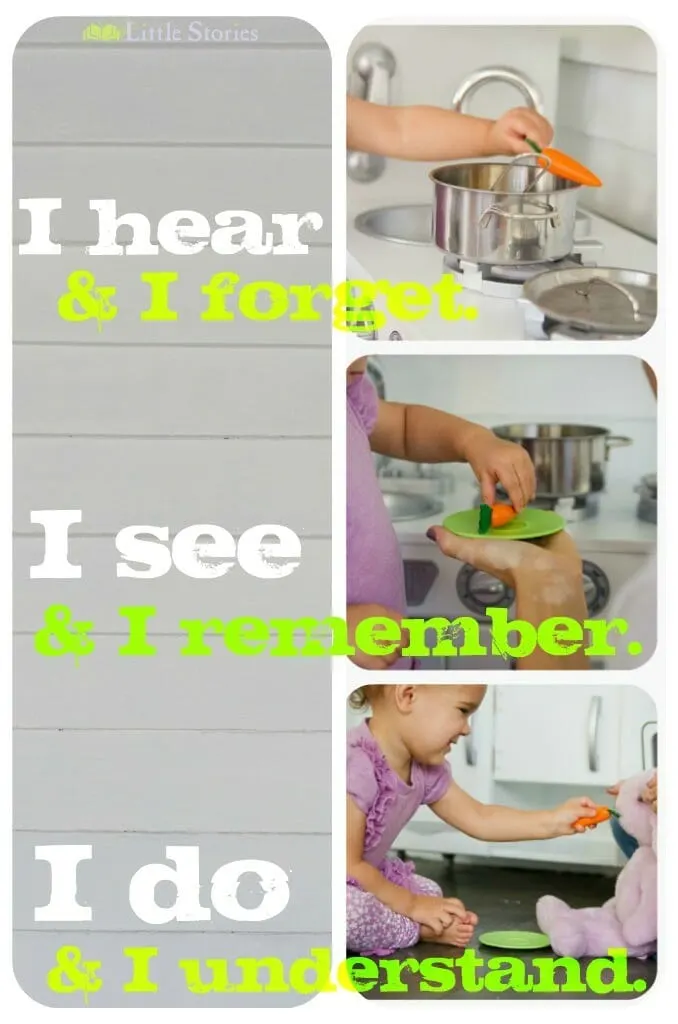The importance of non-verbal communication to any communicative exchange cannot be overstated. When we say a stranger was “so sweet” or even “rubbed us the wrong way,” little of our response to that individual has to do with what they said. We are reading so much about a person through their body language, facial expression, actions, and tone.

For children, who are just learning language and the meaning of words, the value of nonverbal communication is even higher. It’s like you being in a country surrounded by another language. You look for any clues to make sense of the world around you. Children rely desperately on all the cues from the environment to take in information and establish connections. They are on the verge of understanding and soak up anything and everything to attach meaning to words. That’s how they learn.
They learn “mmm” means something tastes good by seeing you enjoy yourself, smile, and say “mmm” during a pleasant meal. If instead you made an awful face, spit out your food, and then said “mmm” that sound would have a different meaning for your child. So what we do creates meaning for what we say.
In my time working with children I’ve been blown away by how much detail they really perceive about their environment, and ME in particular! Children have pointed out when I have a new pair of shoes, noted their favorites in my earring collection, and imitated with the skill of a seasoned actor my thoughtless mannerisms, like tucking my hair behind my ear, scratching the tip of my nose, or resting my chin on my fist. If I’ve learned one thing from children, it’s that they are watching me.
“Don’t worry that children never listen to you; worry that they are always watching you.”
-Robert Fulghum
So, if you want to teach your child something..
Show them!
But that’s not enough…
“I hear and I forget. I see and I remember. I do and I understand.”
-Confucius
So, encourage them to do it too!
Parents tell me over and over that they worry that sign language will keep their child from using words verbally. It won’t. Hearing a word and seeing it, through a sign or gesture, only strengthens your child’s understanding of that word. It’s one more piece of the puzzle. Hearing the word is the auditory piece, seeing the gesture or sign is the visual piece, and actually doing the sign or gesture is the kinesthetic piece. Also, for children who are reluctant to talk or having difficulty using verbalizations, a sign or gesture can help get communication going. Most people talk with their hands, especially when they are really trying to get a point across or having difficulty communicating their thought. The mouth and the hands are next-door neighbors in the motor cortex of our brain and we should use that connection to our advantage.
So, use signs if you know them or chose to learn them, or just use your hands and body to communicate by pointing, gesturing with wide hands to show something is big, furrowing your brow to show that a character in a book is angry, or pretending to take a bite out of a juicy apple in a book.
In fact, when you slow down and think about what you are showing your child, you are likely to say less, and communicate more. Then give your child a chance and see what he may have to show or tell you. When your child takes a turn and uses a sign, gesture, or word, you know he’s really learned something for himself!
In addition to using signs and gestures, you can also show your child a concept using pictures. That’s the power of great illustrations in children’s books. You can also create your own pictures to help your child understand something specific that is posing a challenge.
For example, if your child consistently has a hard time with the nighttime routine, it may help to print out simple pictures of bath, teeth, book, and bed to help your child better understand what is going on.
Using pictures with your child throughout the evening allows him to become part of the process of the bedtime routine, rather than the routine just happening to him. Remember, a picture is worth a thousand words.
Enjoy telling, showing and involving your child in language. Be sure to give him the space to take his own turn and show YOU all that he’s learned!
What was your child’s first gesture or sign? How have you used books or pictures to help teach your child a new idea?
